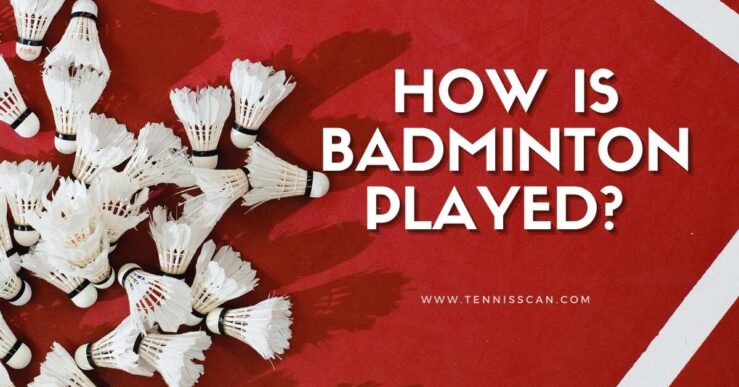Although it shares similarities with other racquet sports, how is badminton played? Swift wrist and arm movements are necessary. The feathered shuttlecock swings slightly different from a ball and has more aerodynamic drag. The sport of badminton has been practiced since the sixteenth century.
The Olympic competitions are the pinnacle of this indoor sport. Asian nations like China and India are leading the way in the sport’s popularity by generating some of the top athletes in the world. A rectangular court that is divided by a net is used to play the racket game of badminton between two opposed players (singles) or two opposing pairs (doubles).
By hitting a shuttlecock with their racquet so that it crosses the net and landing in their rivals’ half of the court, players get points. A rally is terminated once the shuttlecock touches the ground, and each side may only hit the shuttlecock once until it crosses the net.
How Is Badminton Played?
How is badminton played? It’s simple to In contrast to the balls used in most racket sports, shuttlecocks are feathered projectiles with unusual aerodynamic qualities. In particular, the feathers produce significantly more drag, which causes the shuttlecock to decelerate more quickly than a ball.
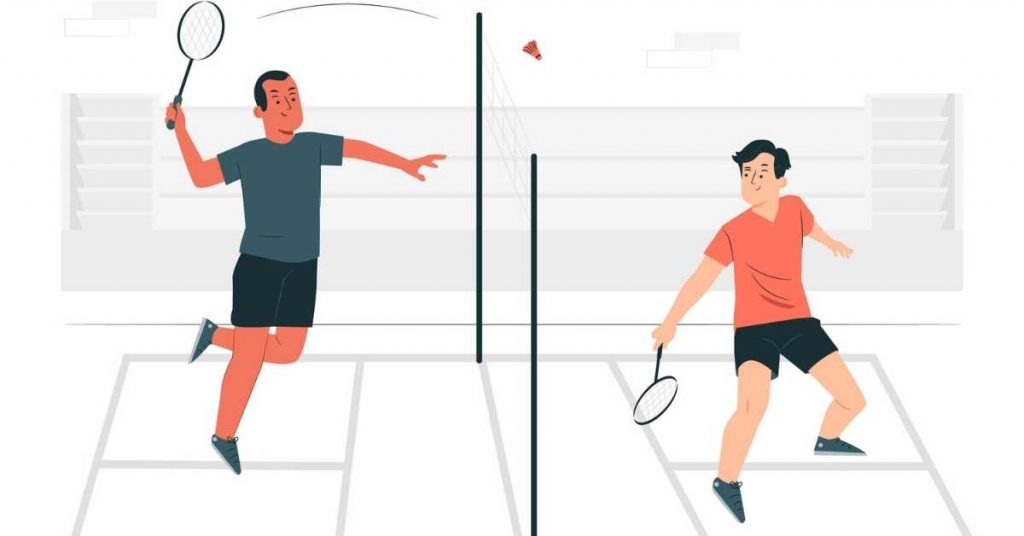
When compared to other racket sports, shuttlecocks have a substantially higher top speed. Competitive badminton is always played inside because wind persistently affects shuttlecock flight.
As a light-hearted pastime, badminton is also played outside, frequently like a game in a garden or on a beach. Since 1992, badminton has been an Olympic sport with five events: men’s and women’s singles, men’s and women’s doubles, and mixed doubles, in which each pair consists of a man and a woman.
Objective Of the game
In badminton, the goal is to hit the shuttlecock over the net and have it land in one of the specified court locations. A rally starts if your opponent is successful in returning the shuttlecock.
You score a point if you force your opponent to hit the shuttlecock out of bounds or into the net by winning this rally. A set is won by scoring 21 points or more, and most contests are best-of-three sets. On either serve, points can be earned.
Badminton Court Dimensions
A badminton court is 5.18m (17ft) wide and 13.41m (44ft) long for singles play. The breadth can be doubled to 6.1 meters (20 feet). The net is 1.52m (5ft) high where it falls in the middle and 1.55m (5ft 1in) high at the ends. The short service line, which is 1.98m (6.5ft) from the net, must be crossed for a serve to be received.
Read More: Tennis Court Dimensions- All You Need to Know
A line that divides the left and right service courts are located outside the short service line. A doubles service line is also present, located 2.5 feet (0.7 meters) from the baseline. Each of the four service courts measures 3.96 m (13 ft) long by 2.59 m (8.5 ft).
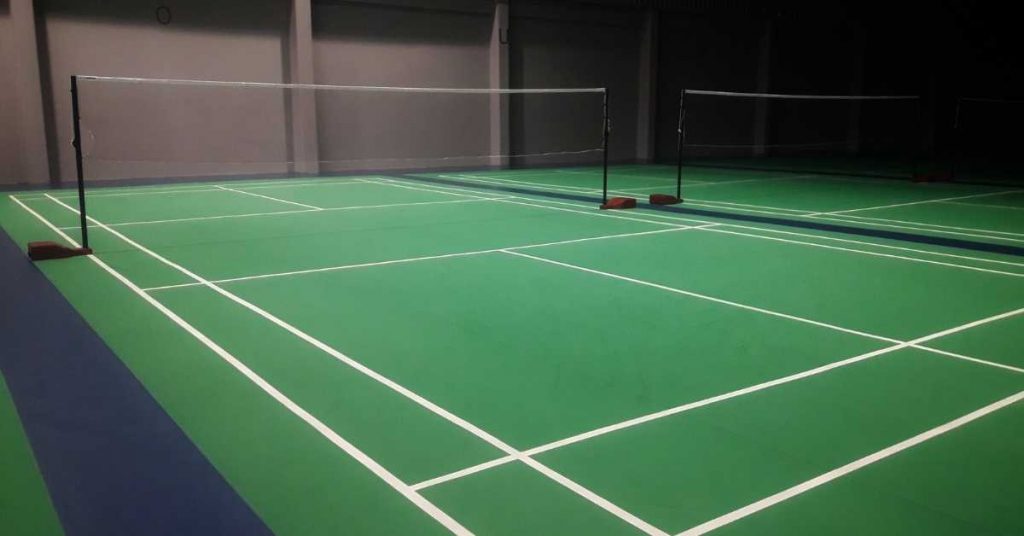
Shuttlecock
The distinctive “ball” in badminton is the birdie, also known as the shuttlecock. Feathers or an artificial substance are used to create the cone-shaped projectile, which is then affixed to a cork or rubber base.
Because of its design, the bird always flies cork-first after being hit and stays that way until it is hit again. The birdie, which has 16 feathers, is between 62 and 70mm long and weighs 4.74 and 5.5g. The cork/rubber base should have a diameter of 25–28mm and should be rounded at the bottom. The feathers’ tip should form a circle with a diameter of 58–62mm.
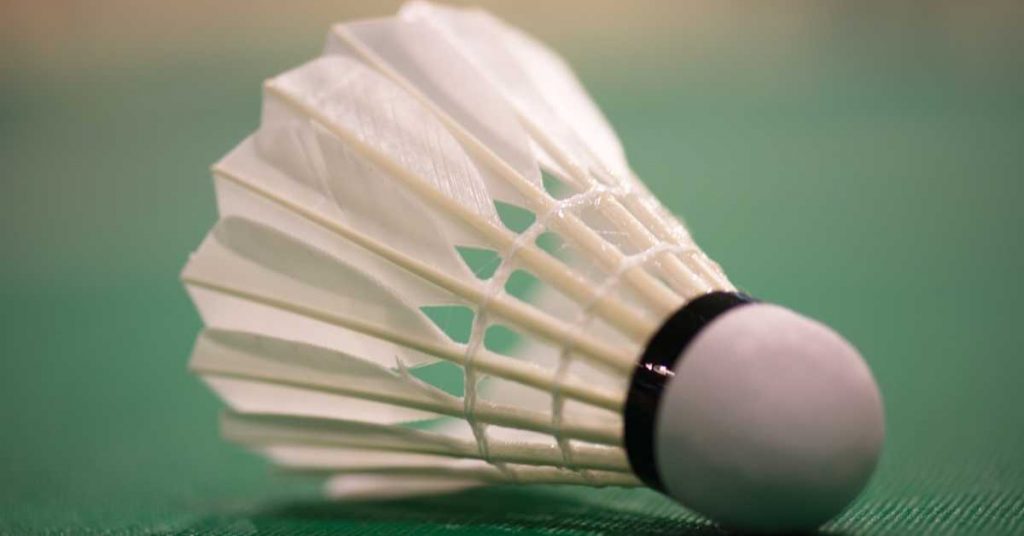
Serving
With a toss, the game begins. One of the players shouts “Head” or “Tail” when the referee tosses the coin. The player or team that successfully flips the coin gets to choose the court’s side and whether to serve or receive first.
The opponent player or team may pick to serve or receive first if the player chooses their favorite side of the court and vice versa. The initial serve is made from the right-hand service court while serving laterally. At 1.15 meters, the server should strike the shuttle beneath the arm.
The server must serve from the proper service court and is not allowed to cross any lines of demarcation. The opponent has the chance to serve if the server makes a mistake while doing so. A rally is started when the receiving player receives the shuttlecock from the proper service court diagonally across from the server’s court and returns it.
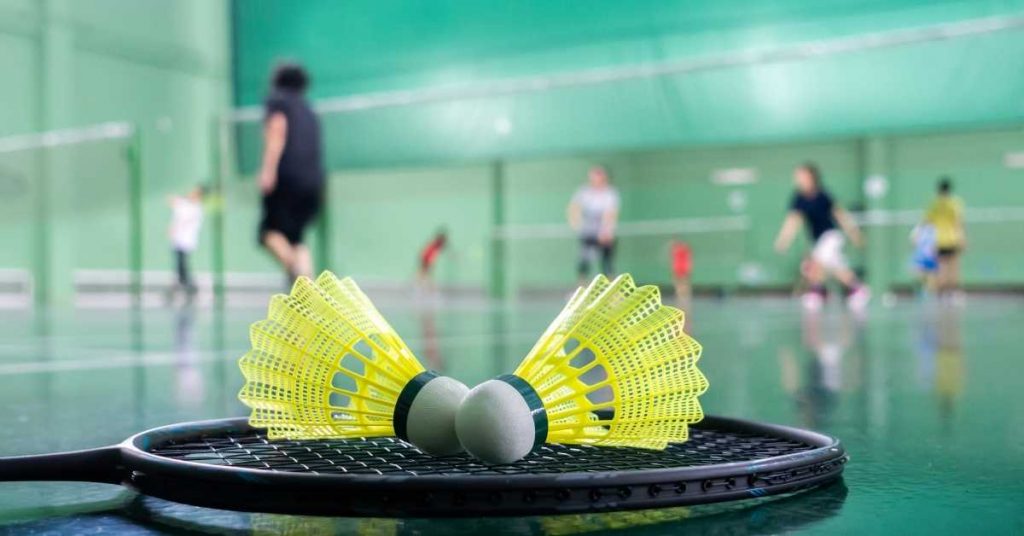
After returning the service, players are free to move around on their side of the court. The rally is over when a player misses returning the shuttle from his or her side of the court or shoots the shuttle outside the court lines, giving the opponent a point. Players switch ends at the conclusion of each game, and in deciding games, players switch ends after one player or couple earns 8 (for men) or 6 (for women) points.
Badminton Rules
FAQ’S
In badminton, the goal is to hit the shuttlecock over the net and have it land in one of the specified court locations. A rally starts if your opponent is successful in returning the shuttlecock. You score a point if you force your opponent to hit the shuttlecock out of bounds or into the net by winning this rally.
On a surface that mimics a tennis court, two or four players use small, light rackets to hit a feathery cork across a net. However, the cork, also known as a shuttlecock or bird, has a top speed of 110 miles per hour (177 kilometers per hour). It quickly slows down after that and slants downward.
The shuttlecock, commonly referred to as a “bird” or “birdie,” was historically a little cork hemisphere with 16 goose feathers sewn on it that weighed about 0.17 ounce (5 grams). However, shuttles constructed of synthetic materials may still be employed in a contemporary play.
